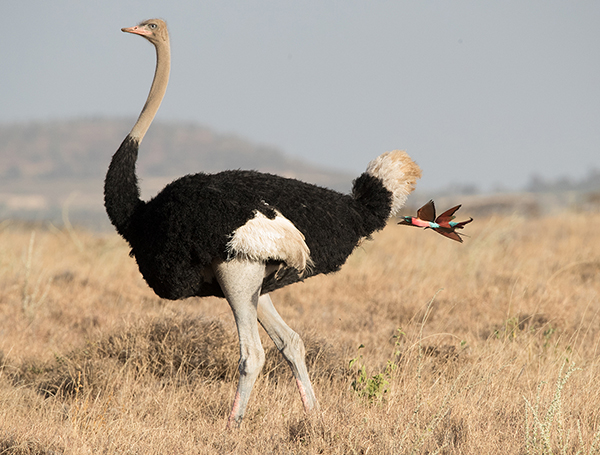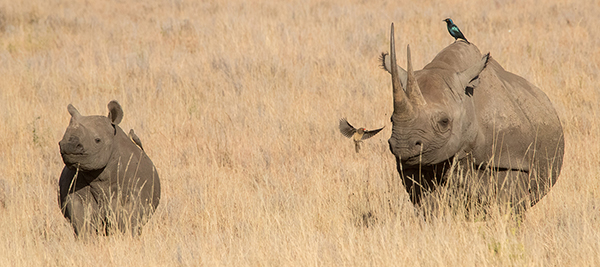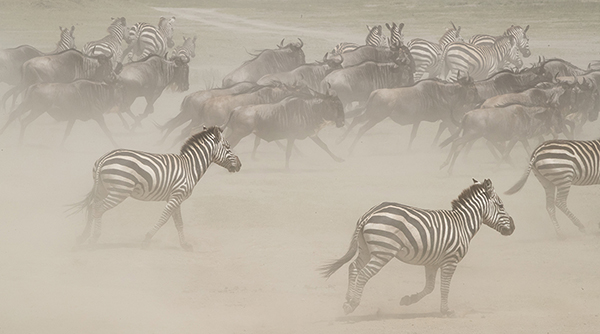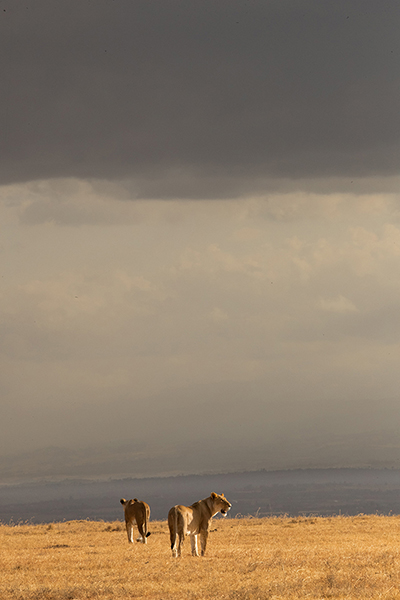Joe McDonald doesn’t miss a shot in Tanzania and Kenya with the new Tamron 150-600mm G2 VC lens.
Joe and Mary Ann McDonald are said to be the most prolific husband-and-wife photographic team in the US, with more than 30 years’ experience in the field and a litany of achievements under their belt: yearly photo tours and workshops across the globe, books and instructional videos, a world record for non-research-related gorilla treks in Rwanda, and more than a dozen wins between them in the annual BBC Wildlife Photographer of the Year competition.
“It’s been awesome and a blessing to share this journey with Mary Ann,” Joe says. “As far as our photographic careers go, working together has certainly enhanced both of them. We’re very competitive with each other in terms of trying to do our best, but we’re not competitive in the sense of who actually captures the best shot. Ultimately, all we’re really concerned about is one of us getting that shot—it doesn’t matter who.”
Safaris are also a regular part of their annual itinerary. But although they’ve made many trips to Tanzania and Kenya, they experienced a first this winter when they returned there: This time around, they brought the new Tamron 150-600mm VC G2 ultra-telephoto zoom lens. “In the past, when we used fixed-focus lenses on safari, especially the big telephotos, as we approached the subject or the subject approached us, we’d have to switch to a smaller focal-length lens, generally mounted on another camera,” Joe says. “I’m sure we lost a lot of images during that transition. Now, with the 150-600 G2, I never have to put my camera down. Our photo productivity, both in terms of the number of images being captured and also in terms of compositional freedom and artistic capability, has increased hugely. Plus the weight of this lens makes it easy to carry around all day long. This is the only way I’m going to shoot from now on.”
With their gear wrapped in inexpensive raincovers to protect against the elements, Joe and his photo groups typically head out on safari before sunrise. “All the parks in Tanzania and Kenya have regulations that you can’t be out at night, but you can be out there right before dawn,” he says. “We’ll take pictures till around 11 or 12, when every intelligent being that’s not human decides to park itself under the shade of the trees. We humans can usually use a rest by that point, too, so we’ll head back to where we’re staying, get hydrated and fed, take a snooze, and just relax for a few hours. By 3 or 4, we’re back out there for the evening session, which lasts until the sun sets.”
The group travels in open-roof vehicles with crank-down or slide windows. “You can stabilize your camera by resting it on beanbags on the roof of the vehicle,” Joe says. “Or, if you’re trying to get a lower-angle shot from inside the vehicle, you can take pictures out the window by resting your lens on a bag.”
Knowing when to stop the vehicle while cruising around the African plains is critical to maximizing the photos you capture. “I always tell people to be proactive, not reactive,” Joe says. “That means anticipating what an animal might do or where it might go, then being there for it instead of simply reacting to what you see immediately in front of you. For example, if a lion is walking nearby, the average tourist will yell at the driver to stop as soon as they pull up sideways next to the lion. By the time the vehicle stops and the people in the vehicle are ready to shoot, the lion has already passed; now they’re just getting the tail-end view of things. What we do instead is drive ahead of the lion so we can capture photos as it walks toward us, as well as right at the moment when it passes us.”
Being somewhat familiar with the native wildlife’s habits and behavior can help set up compelling shots with an interesting storyline to go with it. “Take my photo of the ostrich followed by that carmine bee-eater, for instance,” Joe says. “As these ostriches move along, they kick up cicadas and grasshoppers, and the carmine bee-eaters follow along so they can snatch up those insects flying into the air. We were able to anticipate this ostrich was going to be crossing the road in front of us, so we drove to a position where we’d have a decent vantage point and started taking pictures. Now, the carmine bee-eater isn’t prominent in the picture, but if you know the story behind its habits, and how it follows the ostriches around, this picture is a perfect depiction of the commensal relationship between them.”

450mm, F/8, 1/1600th sec., ISO 1600

600mm, F/16, 1/2500th sec., ISO 3200
Knowing prime time for significant safari events is also key. “We time our trips to Tanzania to coincide as closely as we can with migration times—in this case we were there in February, when the wildebeests give birth,” Joe says. “There may be as many as 8,000 baby wildebeests born each day for about a month. And the zebras are often seen associating with them, so you’ll spot them moving together.”
On the day Joe captured this shot of the two species running together, it was just the beginning of the wet season, when water isn’t easily found, so the animals were moving fast to find a place to drink. “This is where your camera’s high-speed motor drive can come in handy,” Joe explains. “You can’t just take one photo and think, ‘I’ve got it.’ Shooting multiple frames is crucial if you want to capture at least one or two decent photos in a situation like this.”

309mm, F/18, 1/1000th sec., ISO 1600

309mm, F/5.6, 1/800th sec., ISO 1600

329mm, F/22, 1/500th sec., ISO 2500

160mm, F/10, 1/800th sec., ISO 800
To see more of Joe McDonald’s work, go to www.hoothollow.com.
